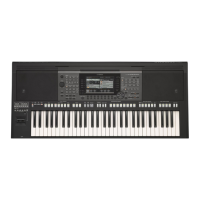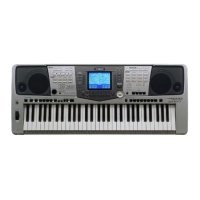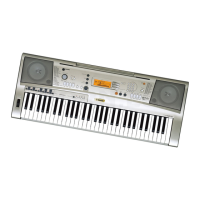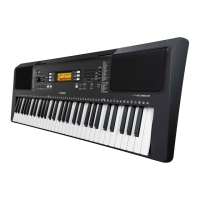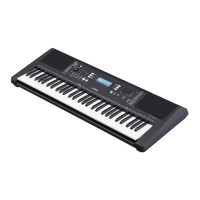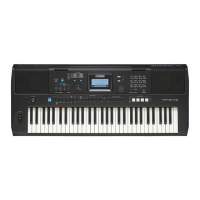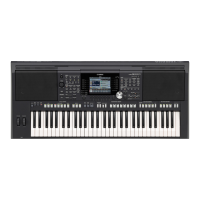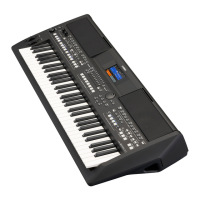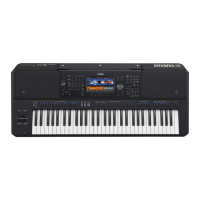32 PSR-A5000 Reference Manual
Editing the Rhythm Part of a Style (Drum Setup)
The explanations here apply to step 5 of the Basic Procedure on page 21. The Rhythm parts of a preset Style consist of
a preset Drum Kit, and each drum sound is assigned to a separate note. You may want to change the sound and the
note assignments, or make more detailed settings such as volume balance, effect, etc. By using the Drum Setup
function of the Style Creator, you can edit the Rhythm part of a Style and save it as an original Style.
1 On the “Rec Channel” display, touch and hold the desired
Rhythm channel until it turns red.
2 Touch [Drum Setup] to call up the “Drum Setup” window.
3 If necessary, press the STYLE CONTROL [START/STOP] button to start playback of the
rhythm part.
The sounds played back are indicated on the display keyboard, making it easy to find the notes for editing.
4 Select the note to be edited by touching the display.
5 Select the desired Kit, Category and Instrument (in that order).
6 If necessary, make detailed settings.
If different drum sounds are assigned to
each section of the selected channel, the
sounds are set to that of the current sec-
tion in order to use the Drum Setup
function.
NOTE
• You can also select the note by
pressing the corresponding note on
the keyboard.
• The Upper Octave is set to “-1” when
the “Drum Setup” window is opened.
The original amount is loaded back
when closing the window.
NOTE
Level For adjusting the volume level.
Pan Determines the stereo position.
Pitch For fine tuning of the pitch in cent increments.
Cutoff Determines the cutoff frequency or effective frequency range of the filter. Higher values
result in a brighter sound.
Resonance Determines the emphasis given to the cutoff frequency (resonance), set in Filter Cutoff
above. Higher values result in a more pronounced effect.
Attack Determines how quickly the sound reaches its maximum level after the key is played. The
higher the value, the quicker the attack.
Decay 1 Determines how quickly the sound reaches its sustain level (a slightly lower level than max-
imum). The higher the value, the quicker the decay.
Decay 2 Determines how quickly the sound decays to silence after the key is released. The higher the
value, the quicker the decay.
In musical terms a “cent” is 1/100th of a semitone. (100 cents equal one semitone.)
NOTE

